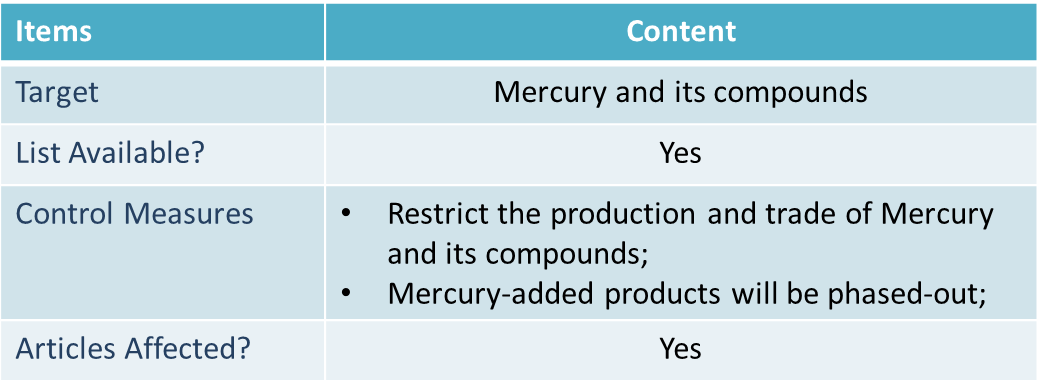Minamata Convention on Mercury
Little Pro on 2016-01-07
The Minamata Convention on Mercury is a global treaty to protect human health and the environment from the adverse effects of mercury and its compounds. It was agreed at the fifth session of the Intergovernmental Negotiating Committee in Geneva, Switzerland at 7 a.m. on the morning of Saturday, 19 January 2013. More than 140 countries have ratified the Convention.
The major highlights of the Minamata Convention on Mercury include a ban on new mercury mines, the phase-out of existing mines and mercury-added products, as well as control measures on air emissions. The table below gives you an overview of the Convention.

Hazards of Mercury and Its Compounds
Mercury and its various compounds are widespread and persistent in the environment. They have a range of serious health impacts including brain and neurological damage especially among the young. Others include kidney damage and damage to the digestive system. Victims can suffer memory loss and language impairment alongside many other well documented problems.
Main Provisions of the Minamata Convention on Mercury
| Mercury and its compounds |
|
| Mercury-added products |
|
| Manufacturing processes |
|
The complete list of mercury-added products and manufacturing processes to be phased out and their phase-out dates can be found in the Annex A and Annex B of the Convention.
Impacts of the Minamata Convention
The Minamata Convention has a big impact on companies who produce and trade mercury and its compounds and those who use them in certain manufacturing processes. The broader impact is on those companies who manufacture or distribute certain products that may contain mercury and its compounds (intentionally or un-intentionally added) such as batteries, measuring devices, fluorescent lamps and switches.
Parties to the Convention usually have their own regulations to address mercury and its compounds. Business operators shall check their own legislation for detailed requirements.
Reference & Resource
http://www.mercuryconvention.org/
Having Questions?
We do not provide consultancy services. If you have questions or need any help, please contact our sponsor. You may also find an expert in CSP business directory below. If you are a consultant, you may get yourself listed in CSP business directory (free) or sponsor this page to leave your contact info on this page..

Tags: Topics - Convention, Substance Restriction in Articles